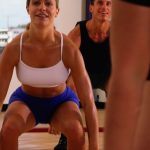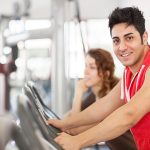
Taking a day off from a favorite exercise doesn’t mean spending the time sitting on the couch. In fact, getting some R&R has a special meaning when it comes to exercise: Rest and recovery. Recovery is everything that happens after the end of one workout and before the start of the next. Whether you’re talking about taking a day off after every strength-training session to build muscles or taking a day off once a week from your usual cardio workout, you still want to engage in physical activity, just at a different pace, one without the challenge of intense training. Experts at the American Council on Exercise say moving is important, because it boosts blood circulation, and that brings nutrients to your muscles for recovery and growth. While a set recovery time is needed after every strength-training workout, with 48 to 72 hours between sessions being typical, recovery after other types of workouts, like high-intensity training or endurance training for a marathon, is much more individualized. Listen to your body to know when to take a break. For many people, it’s feeling more soreness than usual. For some, it may be after every three-to-five days of consecutive, strenuous workouts. Remember: If a workout causes soreness that lasts for several days, your workouts are too intense. Training should get you to the point where recovery time… read on >
























-300x200.jpg)







-300x169.jpg)
